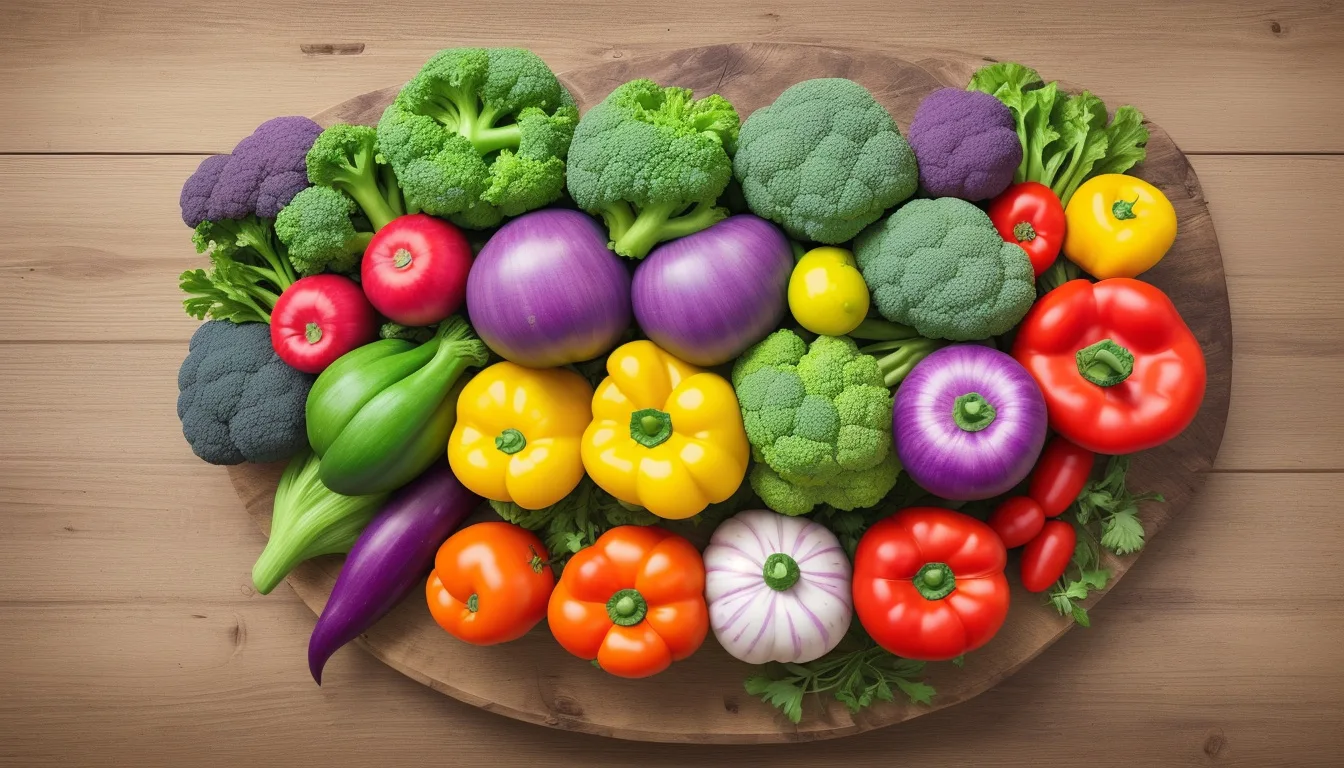
Starting on a healthy eating plan can mean clear thought on each step. You plan your meals and count on smart carb choices. A low carb vegetables list works as a safe guide. Vegetables give vitamins, minerals, fiber, and antioxidants. In this guide, we look at the best vegetables that keep carbs low and keep meals tasty and full of nutrition.
Why Choosing Low Carb Vegetables Matters
Carbohydrates give energy. Too many carbs—especially from processed sources—can raise blood sugar and add extra weight. Low carb vegetables hold fiber and good nutrients. Their low digestible carb count helps keep blood sugar steady and aids in weight control.
Including low carb veggies lets you enjoy foods that fill you up without pushing your carb goal too high. They add bright color, clear texture, and rich flavor to each dish.
What Makes a Vegetable Low Carb?
A vegetable’s carb value comes from its net carbs. You get net carbs when you subtract fiber from total carbohydrates. Fiber is a type of carb that the body does not break down, so it does not spark a blood sugar rise. Low carb vegetables have less than 5 grams net carbs per 100 grams, which makes them a good match for low carb plans.
Top Low Carb Vegetables List to Include in Your Healthy Eating Plan
Below is a list of low carb vegetables that keep your carb count in check while providing needed nutrients:
1. Leafy Greens
Leafy greens rank among the lowest carb vegetables. They bring vitamins A, C, K, and folate along with antioxidants.
- Spinach: About 1.4g net carbs per 100g.
- Kale: About 3.6g net carbs per 100g.
- Lettuce (Romaine, Iceberg): Roughly 1.2g to 2g net carbs per 100g.
2. Cruciferous Vegetables
Cruciferous veggies fight disease and add fiber with few carbs.
- Broccoli: 4g net carbs per 100g.
- Cauliflower: 3g net carbs per 100g.
- Brussels Sprouts: 5g net carbs per 100g.
3. Zucchini and Summer Squash
These versatile vegetables have a mild taste and easily take on other flavors.
- Zucchini: Just 2.1g net carbs per 100g.
- Yellow Squash: Approximately 2.4g net carbs per 100g.
4. Mushrooms
Mushrooms, though fungi, serve as vegetables when you cook. They add a deep flavor with few carbs.
- White Button Mushrooms: Around 2.3g net carbs per 100g.
- Portobello Mushrooms: About 3.9g net carbs per 100g.
5. Asparagus
Asparagus provides a clean flavor and plenty of fiber with very low carbs.
- Asparagus: 2g net carbs per 100g.
6. Cucumbers
Refreshing and full of water, cucumbers work well raw or in salads.
- Cucumber (with peel): 2.1g net carbs per 100g.
7. Bell Peppers
Bell peppers give extra nutrients and fiber even if they carry a bit more carbs.
- Green Bell Peppers: About 3g net carbs per 100g.
- Red and Yellow Bell Peppers: Approximately 4.2g net carbs per 100g.
8. Celery
Often used as a snack or for dips, celery carries very few carbs.
- Celery: Around 1.4g net carbs per 100g.
9. Radishes
Radishes add a crisp feel and a slight peppery taste to your dishes.
- Radishes: 2g net carbs per 100g.
10. Green Beans
Green beans bring fiber and a bit of protein while keeping the carb count low.
- Green Beans: Roughly 4g net carbs per 100g.
Sample Low Carb Vegetables List Table
| Vegetable | Net Carbs per 100g | Notes |
|---|---|---|
| Spinach | 1.4g | Great raw or cooked |
| Broccoli | 4g | Full of antioxidants |
| Zucchini | 2.1g | Ideal for grilling or as noodles |
| Cauliflower | 3g | A popular rice or mash substitute |
| Asparagus | 2g | Works well steamed or roasted |
| Green Bell Pepper | 3g | Adds bright color and crunch |
| Celery | 1.4g | Great with dips or as a snack |
| Mushrooms | 2.3g | Boosts flavor in soups and stews |
| Radishes | 2g | A crisp salad option |
| Green Beans | 4g | Tasty steamed or in casseroles |
How to Incorporate Low Carb Vegetables Into Your Diet
Mix these vegetables into your daily meals with simple ideas:
- Salads: Combine leafy greens with cucumbers, radishes, and bell peppers. They add color and crunch.
- Roasted Veggies: Toss broccoli, cauliflower, and asparagus with olive oil and herbs. Roast them into a tasty side.
- Vegetable Noodles: Spiralize zucchini or yellow squash to form noodles as a pasta swap.
- Soups and Stews: Add mushrooms, celery, and green beans to your broth. They boost both taste and texture.
- Snacks: Cut celery or bell peppers into sticks and serve with guacamole or hummus.
Nutritional Benefits Beyond Low Carbs
These vegetables give more than just low carbs:
• Fiber: Helps keep digestion smooth and makes you feel full.
• Vitamins & Minerals: Support the immune system and add strength.
• Antioxidants: Help protect your cells from harm and lower inflammation.

Eating a range of low carb vegetables makes sure you get many nutrients important for health.
Frequently Asked Questions About Low Carb Vegetables
1. What are the best green vegetables with low carb count to eat daily?
Spinach, kale, romaine lettuce, and asparagus work well. They are full of nutrients and low in net carbs, making them fit daily meals.
2. Can I include starchy vegetables on a low carb diet?
Vegetables like potatoes, corn, and peas contain more carbs. On strict low carb diets, it is better to choose non-starchy vegetables from this list.
3. How many grams of vegetables should I eat each day on a low carb plan?
Most low carb plans suggest a fair amount of non-starchy vegetables. Aim for about 2-4 cups daily (around 150-300 grams) to get enough fiber without extra carbs.
Expert Advice and Further Reading
To get the most from low carb vegetables, check both their nutrients and how you cook them. Steaming or roasting helps keep more vitamins than boiling. Researchers from Harvard T.H. Chan School of Public Health note that a mix of colorful vegetables may boost long-term health.
Conclusion: Embrace This Low Carb Vegetables List to Boost Your Healthy Eating Plan
Using the vegetables from this low carb vegetables list can change your meals into power-packed plates. They keep your carb count low while adding fiber, vitamins, minerals, and antioxidants for health. If you want to lose weight, manage blood sugar, or simply eat better, these vegetable choices let you enjoy food that tastes good and nourishes your body.
Begin with a shopping list of these vegetables and try different recipes. Their many shapes and flavors prove that healthy eating can be fun and varied. Take control of your health—fill your plate with these low carb vegetables and notice the changes in your energy, mood, and overall wellbeing!
If you are ready to boost your healthy eating plan with tasty, low carb vegetables, add them to your next grocery list. Your body and taste buds will thank you!
[center]Always consult with your doctor prior to making drastic diet changes.[/center]
[center]As an Amazon Affiliate, Savvy Keto makes a small commision (at no extra cost to you) on any purchases you make thru affiliated links you click on.[/center]




